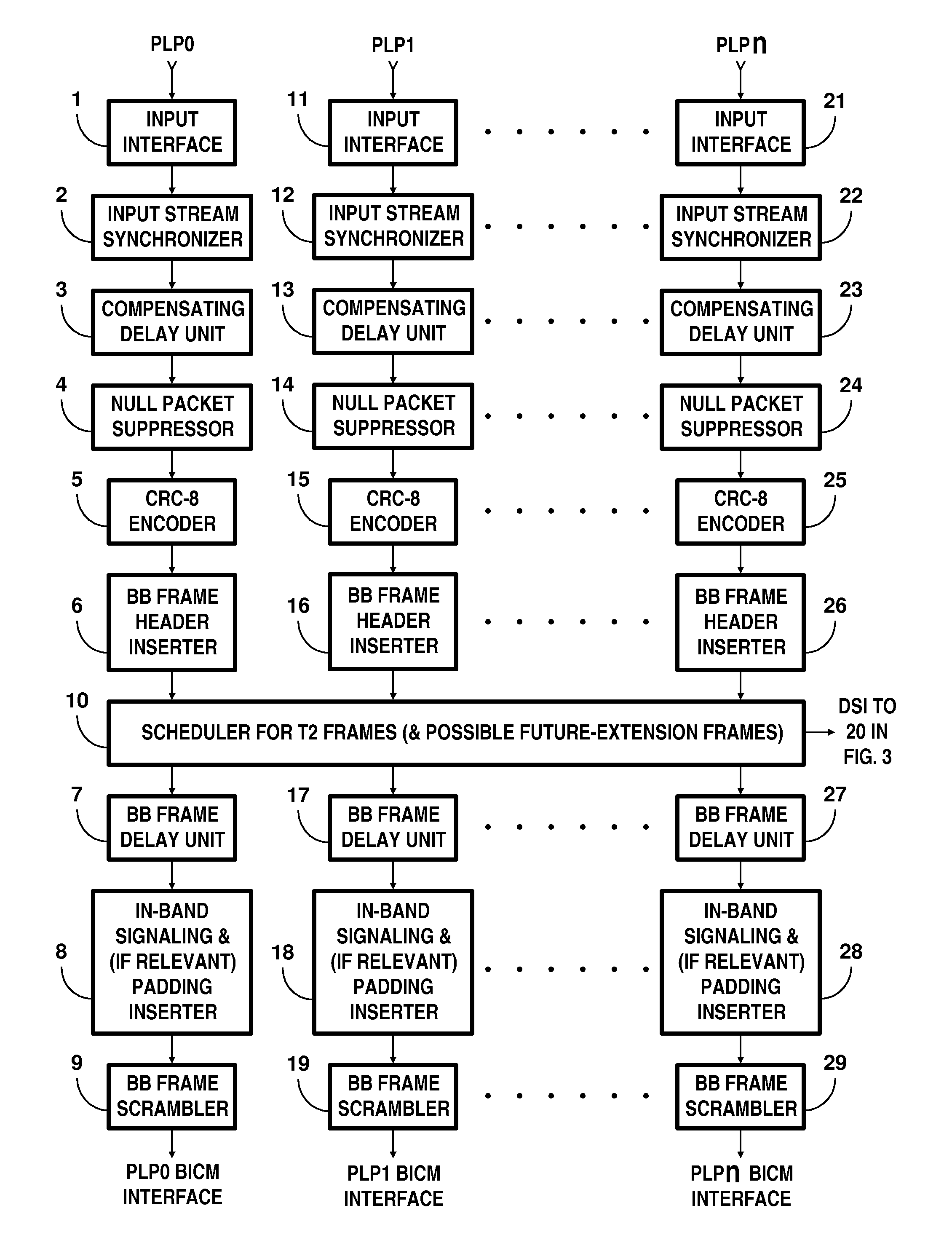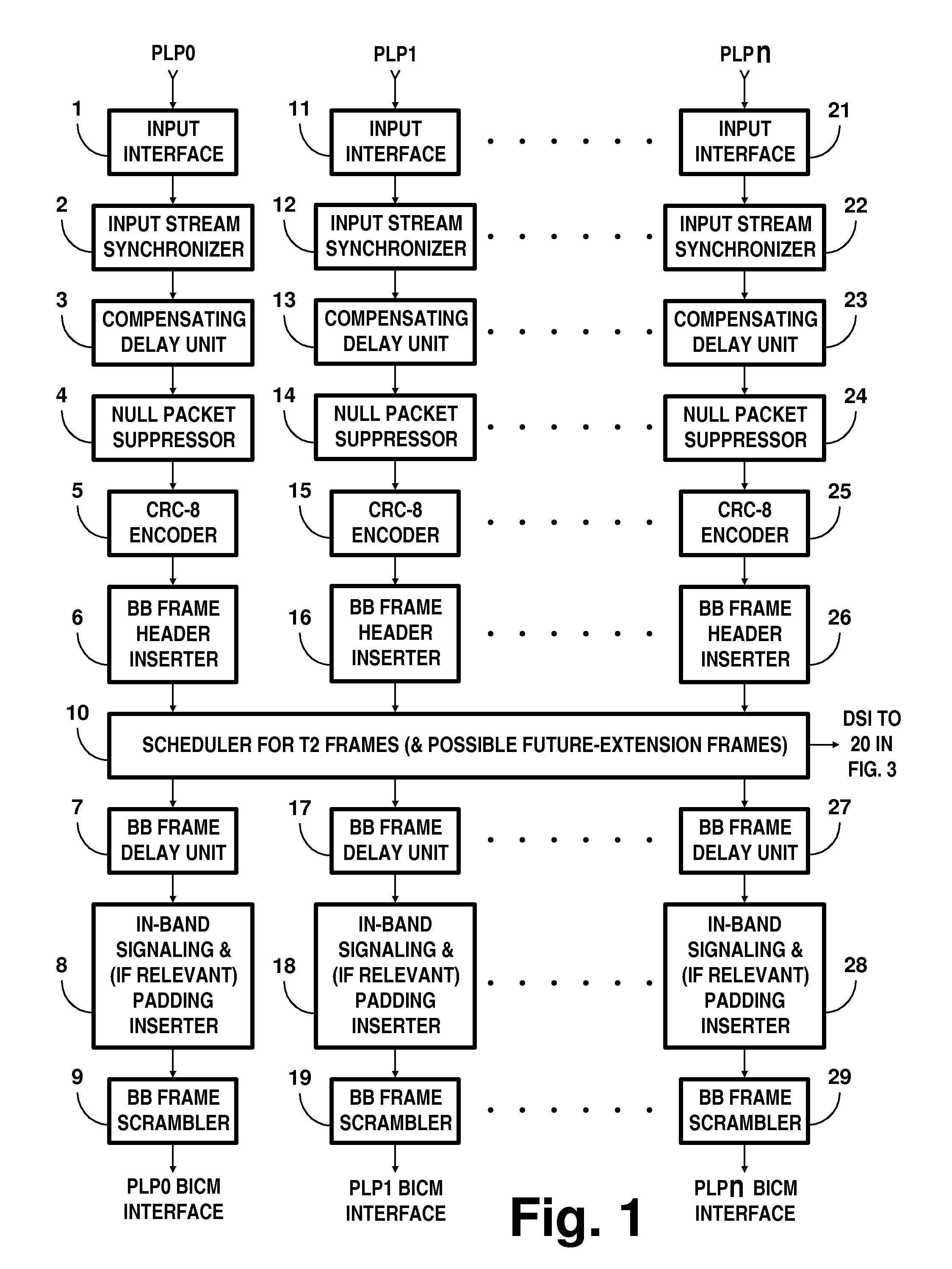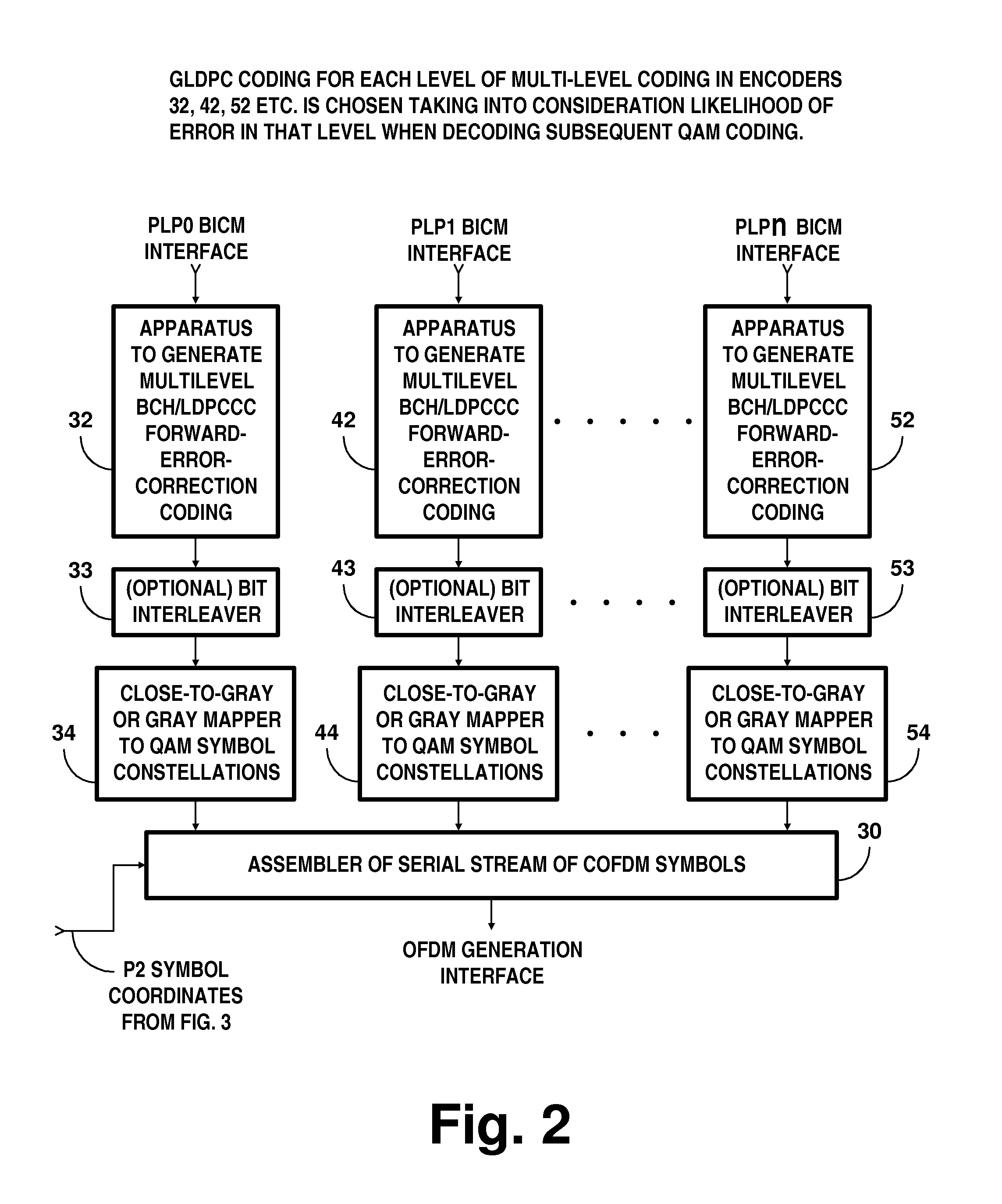Digital television broadcasting system using coded orthogonal frequency-division modulation and multilevel LDPC convolutional coding
a digital television and orthogonal frequency division technology, applied in the field of receivers, can solve the problems of complex routing, high storage requirements, and difficult to obtain code rates, and achieve the effect of parallel independent decoding
- Summary
- Abstract
- Description
- Claims
- Application Information
AI Technical Summary
Benefits of technology
Problems solved by technology
Method used
Image
Examples
first embodiment
[0085]FIG. 6 shows in more detail the concluding portion of one of the PLPs in the FIG. 2 portion of COFDM transmitter apparatus for encoding LDPCCC-MLC designed for being mapped into 64QAM constellations. The output port of a BB Frame scrambler in the beginning portion of that PLP is connected for supplying BICM interface signal to the input port of a sorter 300 of successive bits of BICM interface signal into groups cyclically assigned to three levels according to the average expected level of confidence that each bit will be correct when the DTV receiver de-maps those bits from a 64QAM constellation accompanied by substantial AWGN. The groups of bits assigned to the first level each consist of a prescribed number of bits larger than a prescribed number of bits that groups of bits assigned to the second level each consist of. The groups of bits assigned to the second level each consist of a prescribed number of bits larger than a prescribed number of bits that groups of bits assig...
second embodiment
[0092]FIG. 7 shows in more detail the concluding portion of one of the PLPs in the FIG. 2 portion of COFDM transmitter apparatus for encoding LDPCCC-MLC designed for being mapped into 256QAM constellations. The output port of a BB Frame scrambler in the beginning portion of that PLP is connected for supplying BICM interface signal to the input port of a sorter 310 of successive bits of BICM interface signal into groups cyclically assigned to four levels according to the average expected level of confidence that each bit will be correct when the DTV receiver de-maps those bits from a 256QAM constellation accompanied by substantial AWGN. The groups of bits assigned to the first level each consist of a prescribed number of bits larger than a prescribed number of bits that groups of bits assigned to the second level each consist of. The groups of bits assigned to the second level each consist of a prescribed number of bits larger than a prescribed number of bits that groups of bits assi...
fifth embodiment
[0117]FIG. 14 shows in more detail a part of the FIG. 2 portion of COFDM transmitter apparatus for encoding multilevel BCH / LDPC coding, which coding is designed for being mapped into 512QAM constellations. E. g., the 512QAM constellations are of the same general type as those described by A. L. R. Limberg in patent application US-2013-0028271-A1 published 31 Jan. 2013 titled “COFDM BROADCAST SYSTEMS EMPLOYING TURBO CODING”, which description refers to FIGS. 12A, 12B, 12C, 12D, 13, 14A, 14B, 14C, 14D, 15A, 15D, 15C, 15D, 15E, 15F, 15G, 15H and 151 of the drawing of that patent application. These cruciform 512QAM constellations offer close-to-Gray mapping in which the 9-bit segments of the coding mapped to adjacent lattice points in the cruciform point lattice differ by two bits in 64 instances and otherwise differ by only a single bit in the other 1952 instances.
[0118]FIG. 14 indicates that systematic data bits from the BICM interface are supplied to the input port of a sorter 340 fo...
PUM
 Login to View More
Login to View More Abstract
Description
Claims
Application Information
 Login to View More
Login to View More - R&D
- Intellectual Property
- Life Sciences
- Materials
- Tech Scout
- Unparalleled Data Quality
- Higher Quality Content
- 60% Fewer Hallucinations
Browse by: Latest US Patents, China's latest patents, Technical Efficacy Thesaurus, Application Domain, Technology Topic, Popular Technical Reports.
© 2025 PatSnap. All rights reserved.Legal|Privacy policy|Modern Slavery Act Transparency Statement|Sitemap|About US| Contact US: help@patsnap.com



